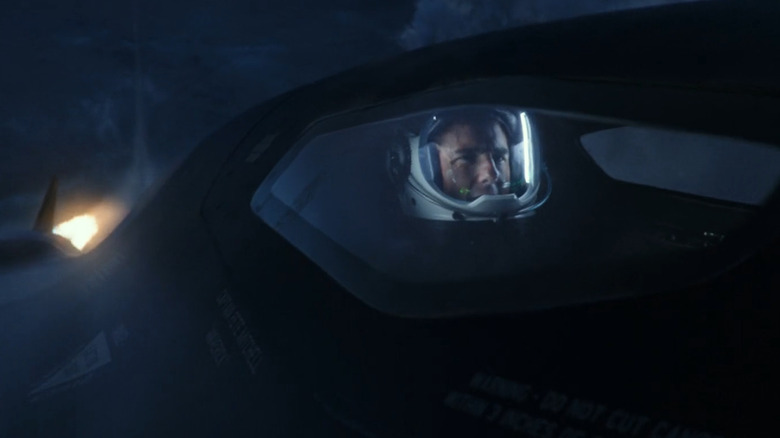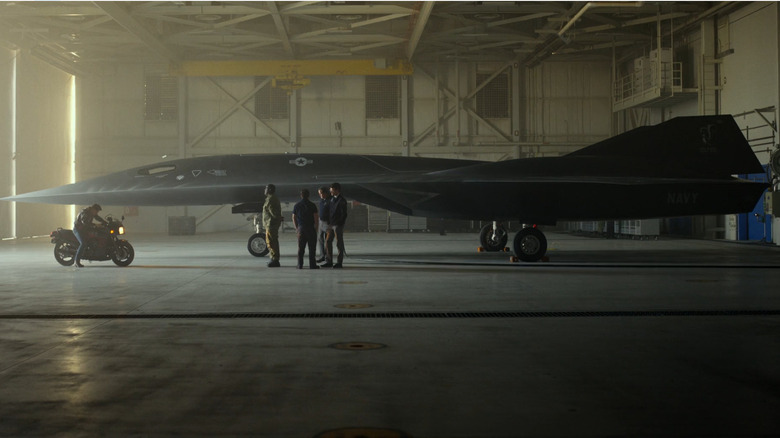It Took 48 Versions To Get Top Gun: Maverick's DarkStar Plane Right
A triumph in blockbuster filmmaking, "Top Gun: Maverick" has rightfully earned its place among the best films 2022 has to offer. In a sea of unoriginal legacy sequels, director Joseph Kosinski was able to make "Maverick" his own while paying homage to what worked in the first film. The sequel goes above and beyond in delivering better action on a much bigger scale, taking full advantage of Tom Cruise's fearless efforts to entertain audiences. Above all, "Maverick" feels real even in its most exciting moments. And that includes the riveting opening sequence that features Maverick performing an unauthorized test flight in the DarkStar jet.
It's hard to imagine a better opening for "Maverick." 30 years after graduating from the Top Gun program, Maverick still feels the need for speed as a test pilot. In a bid to save his hypersonic "DarkStar" jet initiative, Maverick attempts to reach past Mach 10 in the super-sleek prototype plane. The scene that follows is just as riveting as it is almost deadly for Maverick, who ejects from the aircraft as it gets destroyed far past the Mach 10 marker. Although it is based on a real concept, the DarkStar aircraft had to be meticulously designed and built for use in the film. Getting the final look down took a lot more than just a few tries, according to the movie's production designer.
A need for record-breaking speed
Variety spoke to "Top Gun: Maverick" production designer Jeremy Hindle about constructing and designing the DarkStar, revealing that the film's production team "went through 47 versions before landing on the final design." Inspired by Lockheed Martin's hypersonic SR-72 aircraft model (which doesn't exist just yet), DarkStar was always meant to represent what could be possible in the not-so-distant future. It may not actually be the futuristic jet the film depicts, but Hindle insisted making sure it felt as real as possible was the priority for everyone involved:
"I wanted to fully commit to the design and give Tom [Cruise] and the other actors an actual jet to interact with in scenes. The greatest challenges were making sure that every inch of it was as real as possible and getting it built on time. It had to look mean, fast and it needed to be capable of reaching Mach 10, in theory."
The level of care taken to produce a cool-looking jet based on reality is evident, despite the limited screen time. Any similarity to the SR-72 design is warranted given the fact that Hindle and crew worked closely with Skunkworks, a division of Lockheed Martin, to create a faithful depiction of what the future holds for aviation. It's only fitting that Maverick would be in front of cutting-edge technology that negates any drone-obsessed military official that wants to gut his need for speed.
Although it does not exist, the DarkStar plane might as well have been real, thanks to how accurate "Top Gun: Maverick" is. We may not be able to go Mach 10 just yet ourselves, but seeing Maverick get a taste of the imminent possibility is quite the opening for the long-awaited sequel.

